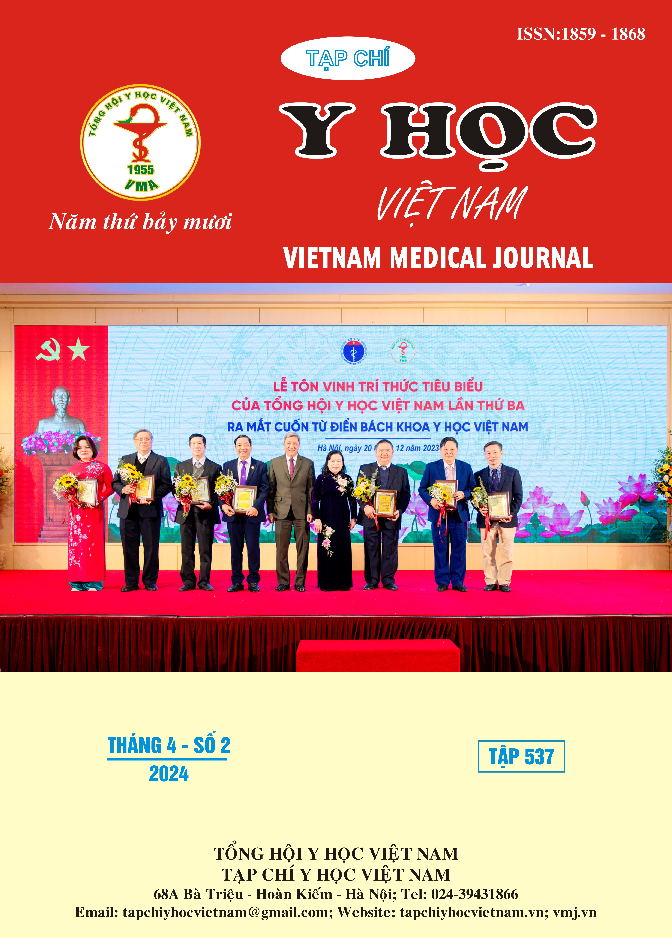ST-SEGMENT ELEVATION MYOCARDIAL INFARCTION AND PERFORATED PEPTIC ULCER: CLINICAL CASE REPORT
Main Article Content
Abstract
Background: ST-segment elevation myocardial infarction and perforated peptic ulcer disease are both emergencies requiring urgent intervention. The patient presented with both emergencies simultaneously a major challenge. Case report: A 61-year-old male presented to the emergency department with a complaint of abdominal pain and angina for 10th hour. An electrocardiogram (ECG) was obtained showing ST-segment elevation in the anterior and inferior leads V2 – V5, II - III - aVF, hs Troponin I: 68886 pg/mL. Computed tomography (CT) of the abdomen and pelvis was subsequently performed, which demonstrated free intraperitoneal air and perforated duodenum. The patient was diagnosed with acute anterior and inferior myocardial infarction for 10th hour with simultaneous perforated duodenal ulcer. The treatment strategy was primary percutaneous coronary intervention first, followed by emergency surgery for perforated duodenal ulcer. After 14 days of hospitalization, the patient recovered well and was discharged. Conclusion: The presence of two life-threatening diagnoses occurring simultaneously in a patient is rare but not unheard of. The establishment of a treatment algorithm use available literature and expert opinion to devise a decision algorithm for future cases in order to provide optimal treatment for these complex cases.
Article Details
Keywords
myocardial infarction, perforated peptic ulcer, percutaneous coronary intervention.
References
2. Domienik-Karłowicz J, Kupczyńska K, Michalski B, Kapłon-Cieślicka A, Darocha S, Dobrowolski P, et al. Fourth universal definition of myocardial infarction. Selected messages from the European Society of Cardiology document and lessons learned from the new guidelines on ST-segment elevation myocardial infarction and non-ST-segment elevation-acute coronary syndrome. Cardiol J. 2021; 28(2):195–201.
3. Halvorsen S, Mehilli J, Cassese S, Hall TS, Abdelhamid M, Barbato E, et al. 2022 ESC Guidelines on cardiovascular assessment and management of patients undergoing non-cardiac surgery. Eur Heart J. 2022; 43(39):3826-3924.
4. Hermansson M, Ekedahl A, Ranstam J, Zilling T. Decreasing incidence of peptic ulcer complications after the introduction of the proton pump inhibitors, a study of the Swedish population from 1974–2002. BMC Gastroenterol. 2009; 20(9):25.
5. Intan RE, Hasibuan FS, Gandi P, and Alkaff FF. Gastric perforation mimicking ST-segment elevation myocardial infarction. BMJ Case Rep. 2021; 14(3):e237470.
6. Kaplan A, Schwarzfuchs D, Zeldetz V, and Liu J. Acute Myocardial Infarction with Simultaneous Gastric Perforation. Clin Pract Cases Emerg Med. 2017; 1(3):179–182.
7. Livhits M, Gibbons MM, de Virgilio C, O'Connell JB, Leonardi MJ, Ko CY, Zingmond DS. Coronary revascularization after myocardial infarction can reduce risks of noncardiac surgery. J Am Coll Surg 2011; 212:1018-26.
8. Livhits M, Ko CY, Leonardi MJ, Zingmond DS, Gibbons MM, de Virgilio C. Risk of surgery following recent myocardial infarction. Ann Surg 2011; 253:857-64.
9. Møller MH, Engebjerg MC, Adamsen S, Bendix J, Thomsen RW. The Peptic Ulcer Perforation (PULP) score: a predictor of mortality following peptic ulcer perforation. A cohort study. Acta Anaesthesiol Scand. 2012; 56(5):655-62.
10. Murphy FD, Livezey MM. Electrocardiographic changes simulating those of acute myocardial infarction in a case of perforated gastric ulcer. American Heart Journal. 1994; 28(4):533-537.


